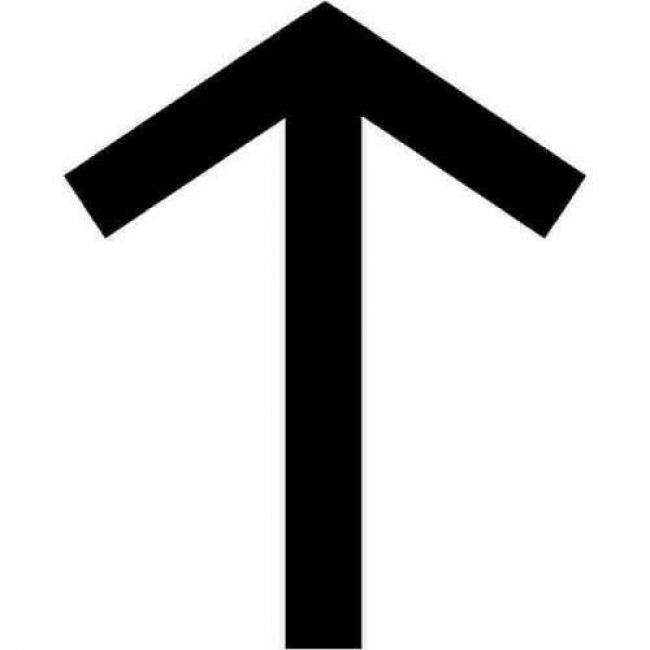
Other names:
In a different Futhark (runic alphabet), this symbol is known as the “teiwaz” or “tiwaz.”Origin:
Tyr is the 17th rune in the alphabet (in another Futhark, it is the 12th). It comes from an ancient German script, which was used in modern-day Scandinavia and the British Isles. The rune symbolizes the god Thor, but it can also simply mean “god” and “ruler.”Uses:
The Tyr rune denotes the sound [t] in runic writing. It is often used to stylize an inscription as ancient. Modern neo-pagans who do not hold neo-Nazi or other far-right views also use this symbol.
In Nazi Germany, the Tyr rune came to symbolize "fight, battle, victory" (associated with Thor, the god of war). It was widely used, especially within the Hitler Youth, at award ceremonies for special sporting achievements, and as a symbol of the Adolf Hitler schools that trained the future Nazi elite. The Tyr rune was also the emblem of the 32nd SS Volunteer Grenadier Division “30 Januar.”
Use as a hate symbol:
One of the most employed symbols among modern neo-Nazis, the Tyr rune is used to denote a continuation of the “struggle and victory” of Nazi Germany. Members of the far-right in various countries use it widely as an indicator of Nazi, neo-Nazi, and racist views, and it is often associated with the most aggressive neo-Nazis. Many neo-Nazi organizations use it as their emblem, including the Nordic Resistance Movement (a Pan-Nordic, neo-Nazi group registered as a political party in Sweden, but banned in Finland).
Due to the simplicity of this image, it is often used in place of the letter “T” in graffiti, on banners, and so on.
In Ukraine, it is used widely as an indicator of Nazi views, often without any connection to a specific organization or structure. It is also the emblem of WotanJugend, a neo-Nazi organization active in Russia and Ukraine.
The mistaken use of the Tyr rune is uncommon. Though it resembles an arrow, it can usually be distinguished from an ordinary arrow symbol with little difficulty. However, if the Tyr rune is included in a stylized inscription, it is important to analyze what the inscription says to determine if it is being used as a hate symbol.

Emblem of 32nd SS Volunteer Grenadier Division 30 Januar

Emblem of Wotan Jugend
